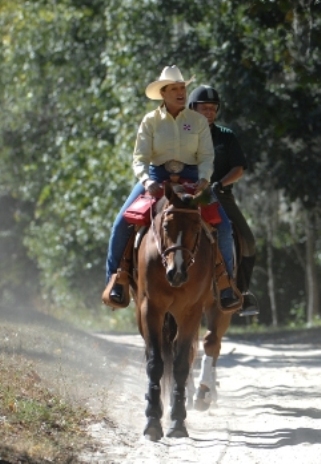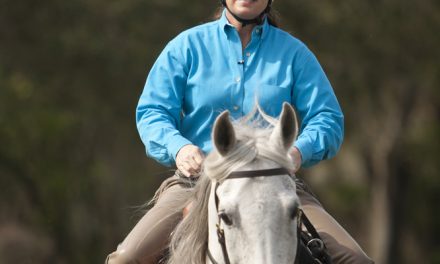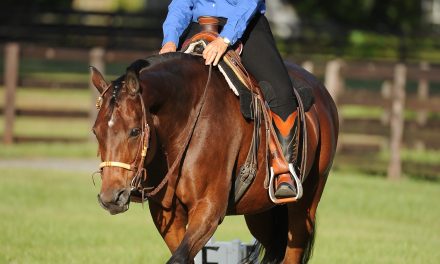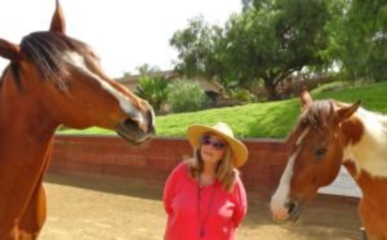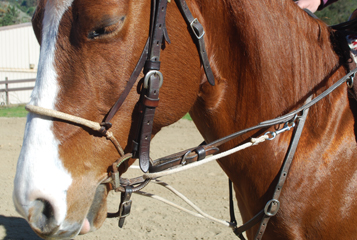Palm Partnership Training
 There are certain qualities every horse needs to succeed, no matter what discipline. Every horse should be forward, straight, and balanced. Let’s look at these concepts in closer detail.
There are certain qualities every horse needs to succeed, no matter what discipline. Every horse should be forward, straight, and balanced. Let’s look at these concepts in closer detail.
Forward does not mean fast. What it does mean is that your horse is using his
hindquarters to propel himself forward rather than pulling himself forward from his front end. It also means moving freely and confidently in all gaits. On the dressage training pyramid that we discussed in the previous series, forward is referred to as impulsion.
Straight means that the horse is moving forward with his spine in perfect
alignment from poll to tail, whether he is moving forward on a straight track or bending in a corner or a circle. Straightness is the next-to-last level on the dressage pyramid.
A balanced horse is moving both forward and straight. When you achieve balance, you not only maximize the quality of your horse’s movement; but you also maximize his athleticism. That means you can ask him to do anything – go slowly, go fast, put his head down, bring his head up, perform a sliding stop or a lightning-quick
rollback, or curl around a barrel at high speed. When you achieve balance, you not only have a “rideable” horse, but also a horse that can perform and advance in any event for which he is suited.
The USDF Glossary of Dressage Judging Terms defines collections as: “the horse’s hindquarters take more of the load by bending further at the joints, which brings the hind legs further under his body. As a result of his lowered hindquarters, his forehand becomes lighter and has more freedom of movement. In correct collection, the strides become shorter, with increased energy and activity. Impulsion must be maintained for the gaits to become more expressive and cadenced.” Collection is at the pinnacle of the dressage training pyramid.
It should be easy for anyone to understand why balance and a lighter forehand with more freedom of movement would be an asset for any horse in any discipline. However, if you are having trouble projecting this image onto your sport of choice, here are a few examples:
1. Reining: Without balance and collection in reining, your horse cannot sit down over his hindquarters as his hind feet slide through the dirt at the same time his shoulders are elevated so that his front legs are free to “walk” through the stop. (Picture a reiner doing a plus-point sliding stop – that requires a high level of collection!) If your horse did not have balance and collection, he would be forced to bounce to a stop over his stiff hind legs as his front legs jab the ground like pogo sticks. It’s not pretty to watch, and it sure isn’t fun to ride!
2. Western pleasure: A strung-out and uncollected rail horse (and you see a lot
of them) drags himself along with his front legs while his head is pumping up and down like the arm of an oil well. His gaits look lurching and artificial rather than smooth and free flowing. Western pleasure is a perfect example of where dressage can help. To get the “slow” required in today’s pleasure ring, and to get the quality of movement needed to win, you first need to perfect your horse’s natural gaits. You do that by lengthening his stride, not by pulling on his face! Remember, you need forward for balance. Once your horse is balanced, you easily can slow down his leg speed without trashing his movement.
3. Barrel racing: If your horse is not balanced and collected over his hindquarters
as you turn him around a barrel, he will likely fling out his hips which dumps his weight onto his inside shoulder. That not only puts you at risk of knocking over the “can,” but it also means he will flatten his body and lose his drive from behind. He, therefore, will be unable to propel himself out of the turn and to the next barrel at full speed. In short, you’ll add time to the clock. In speed events, time kills!!
4. Trail: If your horse’s weight is tipped over his front end, rather than shifted over his hindquarters, you can bet he’ll be tick-tick-ticking the poles which is an error that costs points. It’s not his fault, either. When your horse in on his forehand, it is harder for him to lift his feet and clear the obstacles, and that will cost you.
5. Western riding: If your Western riding horse in unbalanced, several things can happen. He might delay his lead changes; change with his front legs first, rather than initiating the change with his hind legs; pop up in the air when he changes, rather thank keeping a level topline as his legs glide through; or change in front and not behind. Most of those mistakes can be traced to a lack of forward in this event. It’s not uncommon to see the same head bobbing in the pleasure pen. When you see a Western riding horse bobbing his head at the lope, you’ll likely see him pop up in the air and lurch as he struggles to change leads. You can bet such a horse would love to have a little forward – and balance – to make his job easier!
For more information about training courses, educational materials and more,
please visit www.lynnpalm.com or call 800-503-2824.

